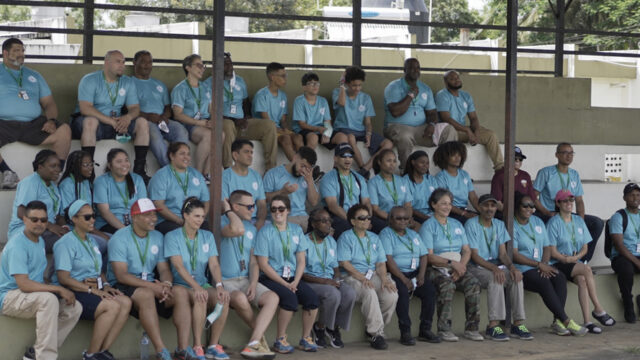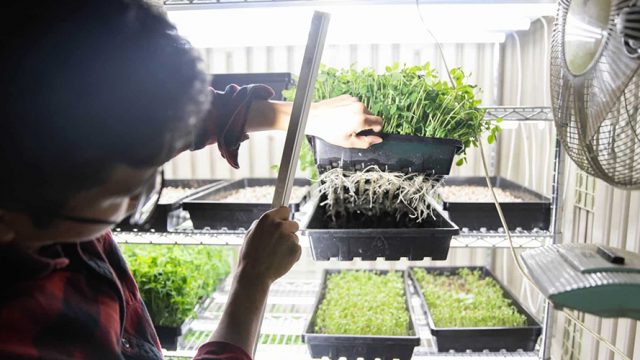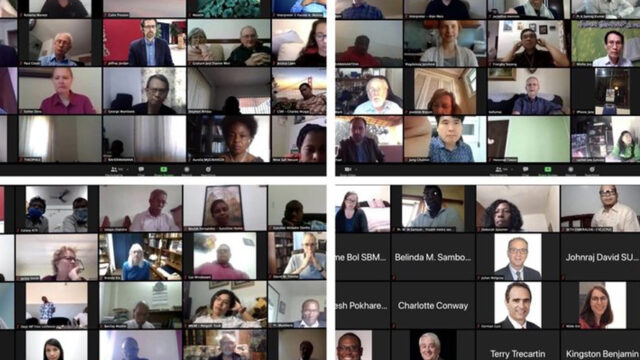Innovative church planting in Hanover, Germany

Twenty years ago members of a local Adventist church felt called to launch a church planting project. They started reaching out to children and families in Hanover, Germany’s youngest district, through hands-on outdoor education.1 A large climbing tower (the “Life Tower”) soon became a prominent landmark in the neighborhood. Through effective community building the project was recognized as an important voice in the district’s social development.
Life Tower’s ministry is still an ongoing project, but it hasn’t yet produced an Adventist church. Is it a failure?
One of the early founding members of the project puts it this way: “We had our vision, dreams, and goals. Over the years we had to embrace both successes and failures. We had to accept that the people we serve may need something different from our agenda. Should we let them down just because they don’t respond the way we want them to? If we did so, we would reveal that it has never been about them, but us. Instead, we will continue walking the path of Christ.”
And so the project has expanded to include a pastor, a social worker, and many volunteer leaders from two local congregations, other ministry partners, and community members. The Kronsberg Life Tower project has been transformed from an autonomous project bubble into a complex network in which life is pulsating stronger than ever. We are a permanent member in the district’s youth ministry council, often coleading joint venture projects. The Adventist church is being noticed and gaining a good reputation in the city.
Challenges
Every church plant project will face challenges—socially, financially, or even internally. A new entity in a neighborhood is often viewed with suspicion. In secular Germany, projects with a religious background struggle to gain a good reputation. People often assume that community services might be used for proselytizing or, even worse, for brainwashing. We have heard these fears personally.
What if we resist the urge to defend ourselves, and rather focus on our mission while trusting prophetic principles? What if we truly seek the peace and prosperity of the city we are serving? What if we wholeheartedly pray for the city, because if it prospers, we too will prosper (cf. Jer. 29:7)?
Our neighborhood represents a vastly diverse community—people from very distinct national, cultural, ethnic, and religious backgrounds. Wherever possible, we contextualize and preach the “everlasting gospel,” the good news that needs to reach “every nation, tribe, tongue, and people” (Rev. 14:6).
The many children and families who join our activities find a safe space without violence and discrimination, where they can participate and grow. Accomplishing this hasn’t always been an easy task, but God has never let us down.
Christ’s Method
Ellen White offers this well-known counsel to all engaged in mission: “Christ’s method alone will give true success in reaching the people. The Saviour mingled with men as one who desired their good. He showed His sympathy for them, ministered to their needs, and won their confidence. Then He bade them, ‘Follow Me.’ ”2
She describes five steps, of which none should be skipped. If we rush people, our efforts may falter. Sometimes, in our missionary zeal we push toward the final step too soon. What if reaching the final step takes more time than we would like to admit? Will we patiently live out the first steps? If we withdraw from the community, then Christ’s method was not much more than a strategic plan for our success.
Obstacles
The Life Tower has become well embedded in the neighborhood and is realizing its potential as one of the most effective agents for youth and family ministries. We have received support from the Hanseatic Conference, the North German Union, the Inter-European Division, and the General Conference, mainly by funding in human resources. Specific investments, such as the restoration of the climbing tower, have been funded by external partners sharing our vision and mission.
One of the biggest obstacles that the project has faced has been the issue of our land lease. In January 2024 we received an email from the city of Hanover, stating: “We assume that you, too, are interested in transforming the temporary contract into a permanent one.”The phrase “you, too” filled our hearts with joy, as the city administration showed us that we are a trusted partner and wanted in this district. Our impact on and perceived value to the Kronsberg district was evidenced in a new and permanent contract. For our property of 4,200 square meters (more than 45,200 square feet), we pay the rent of 21 euros (about US$23) per month, roughly the equivalent of a meal at a restaurant. Our new contract represents a promising cooperation with mutual support and benefit for us as well as the people we serve.
Renewed Vision
In 2021 we refined our vision, our core values, and focus areas with support from the Friedensau Institute for Evaluation (FIFE). This process was a one-year collaboration in which all the aspects of our vision were discussed by Adventists, local community members, and cooperation partners to build a foundation that would serve our church and the district.
This new focus has led to the launching of open-air seeker services at Life Tower, as a new way to testify to and explore the ways in which God’s work in the community has already shown itself. The time seemed to be ripe for us to reconnect with the original church plant focus. And so, in November 2023, we started a collaboration with the Arthur Daniells Institute of Mission (ADIMIS), located at Friedensau Adventist University, to receive coaching. We needed to reexamine our understanding of what it means to “plant a church,” especially in this environment. The Kronsberg Life Tower project may never be transformed into a regular church, but we are open and excited to know that God may use the project to do something even bigger.
Perhaps we may see in retrospect that the real story was not a church planting a church, but a church planting a community building project, which itself is giving birth to a new church.
1 The Kronsberg district emerged as a model of modern and economical urban planning. It was part of the “Expo 2000” exhibition in Hanover. The district’s rate of children stands at 30 percent, twice as high as Hanover’s average of 15 percent. Kronsberg is a neighborhood with a disproportionally large number of children and youth from diverse backgrounds.
2 Ellen G. White, The Ministry of Healing (Mountain View, Calif.: Pacific Press Pub. Assn., 1905), p. 143.








